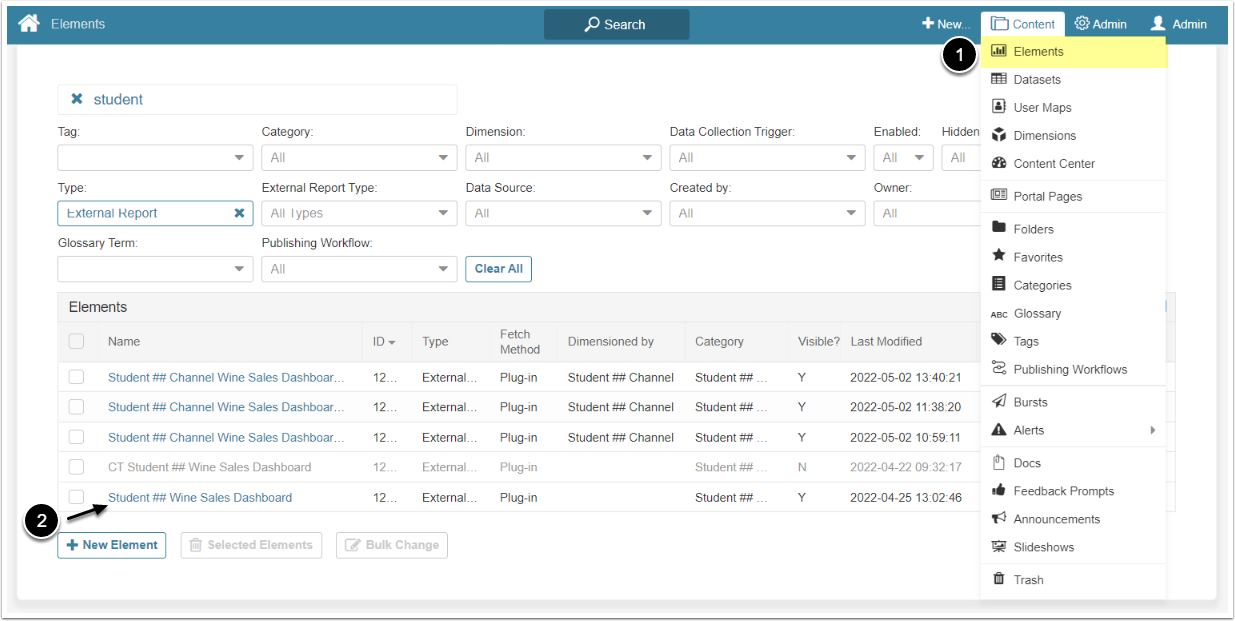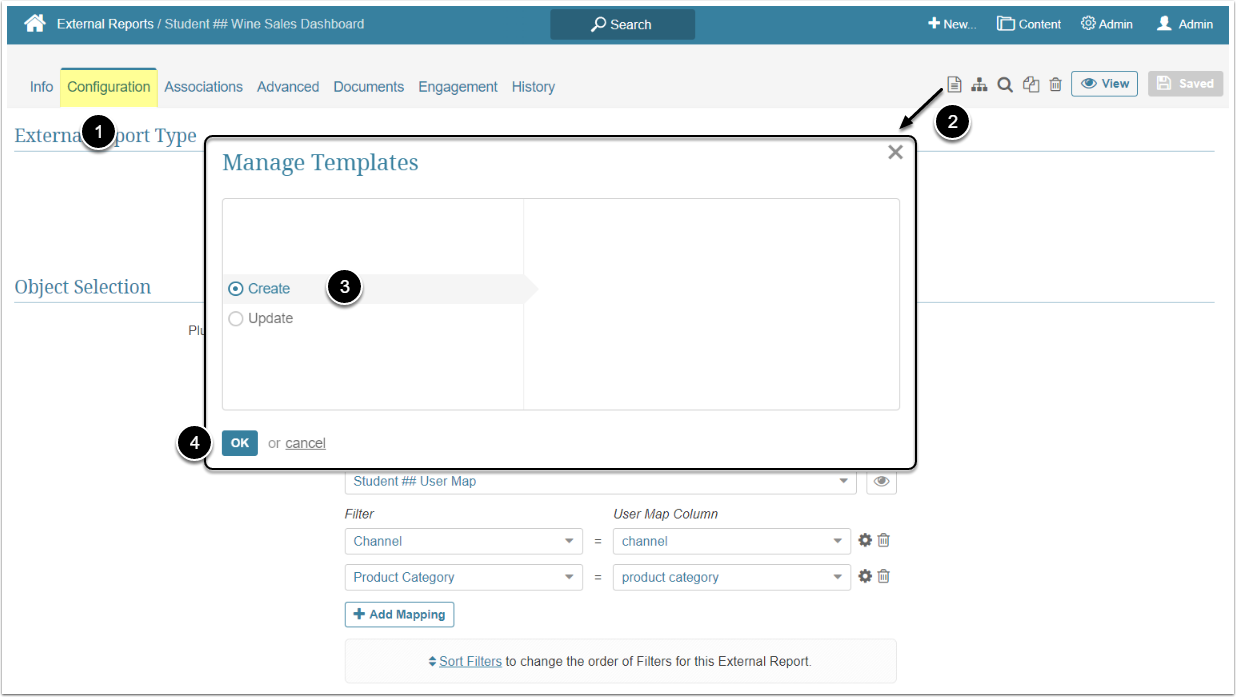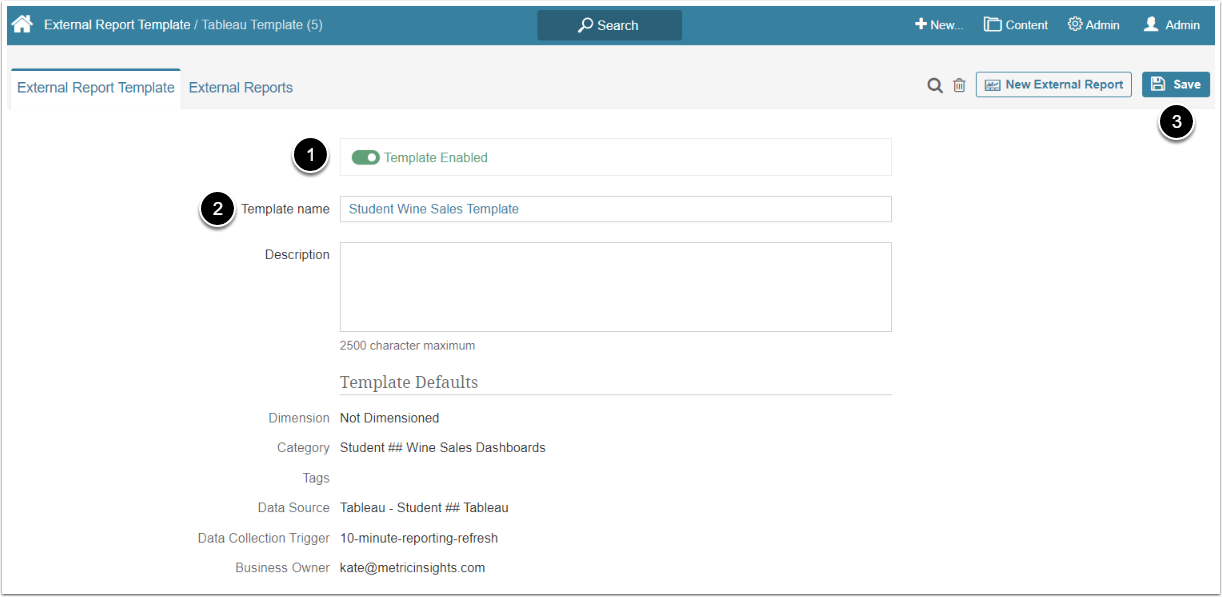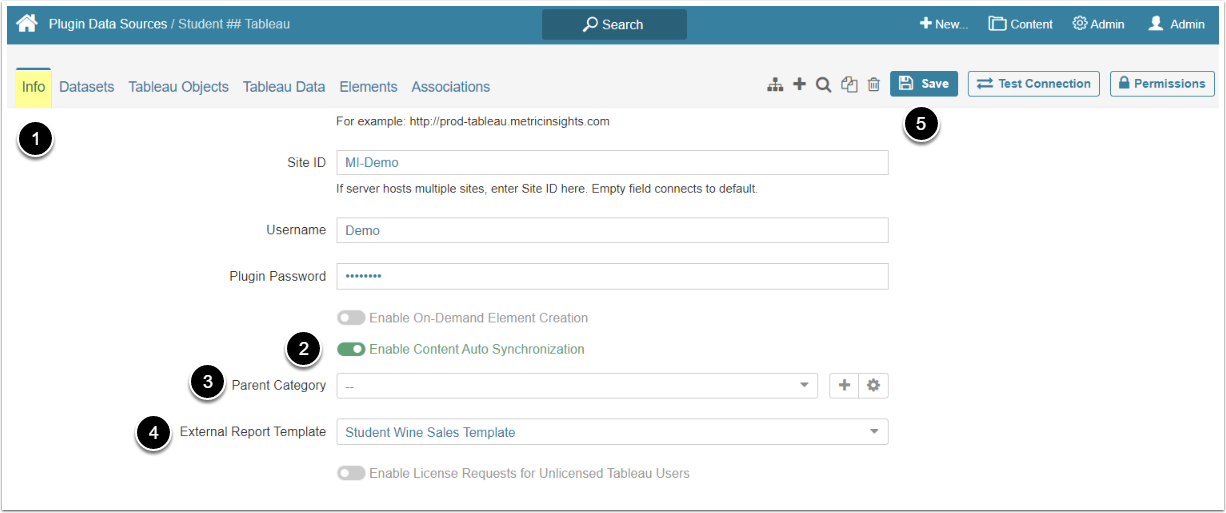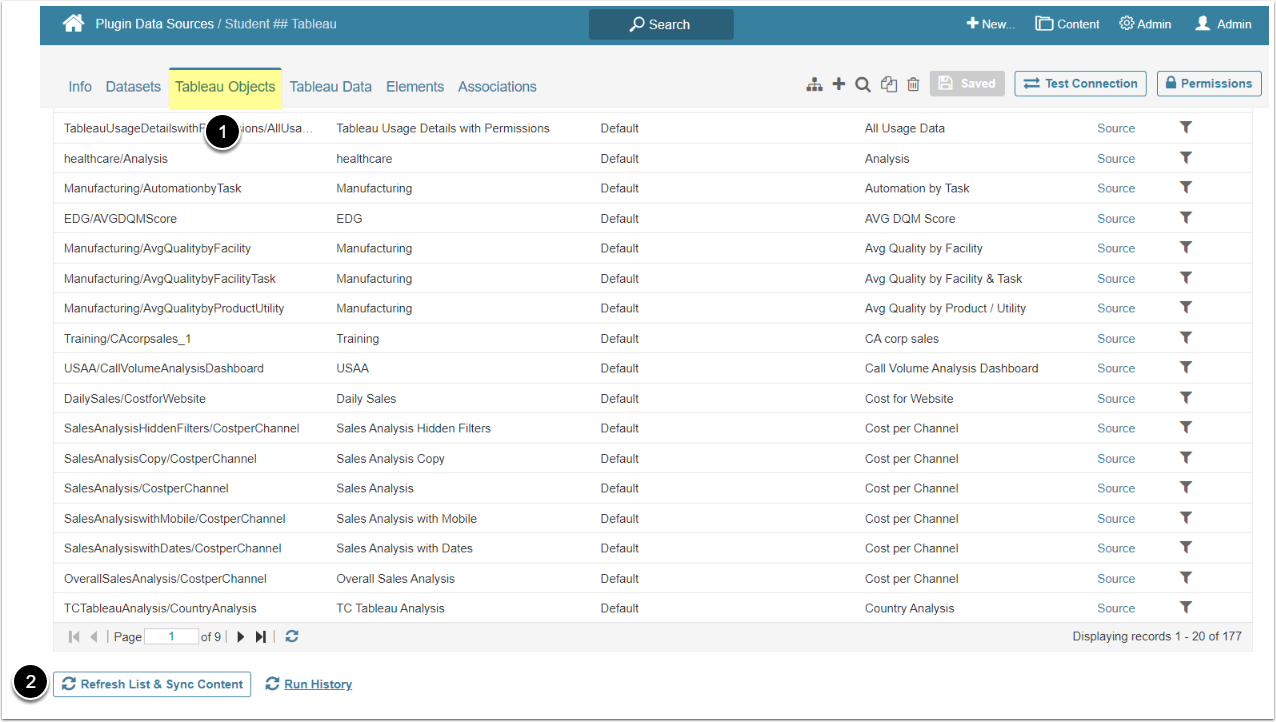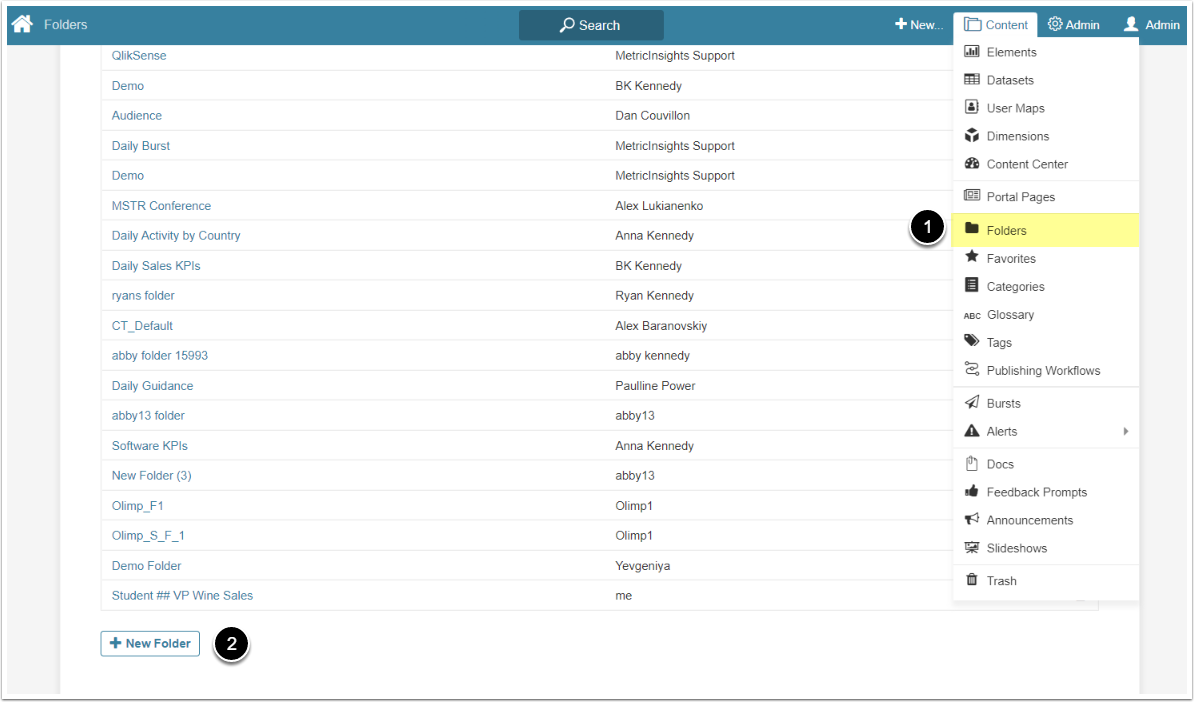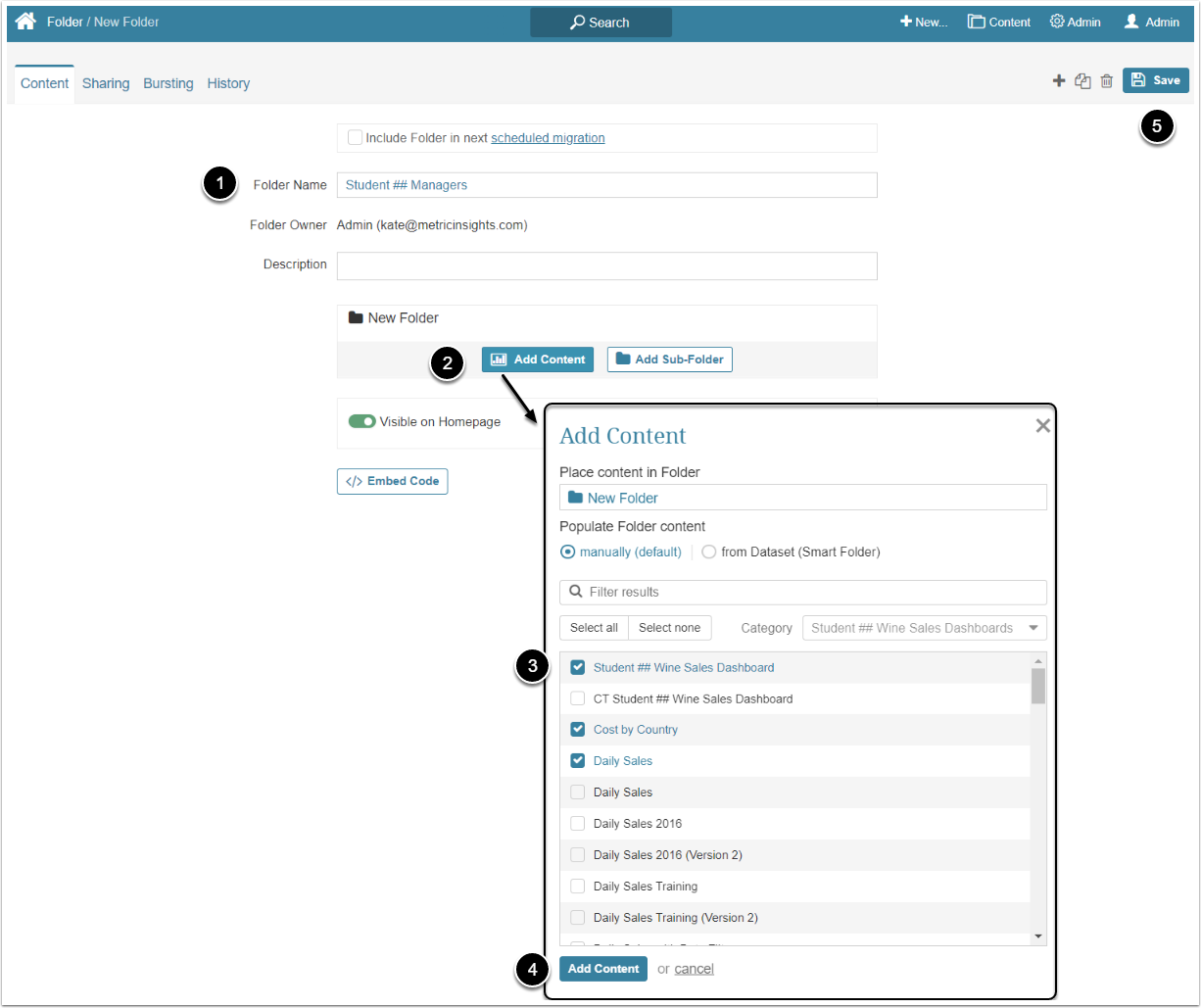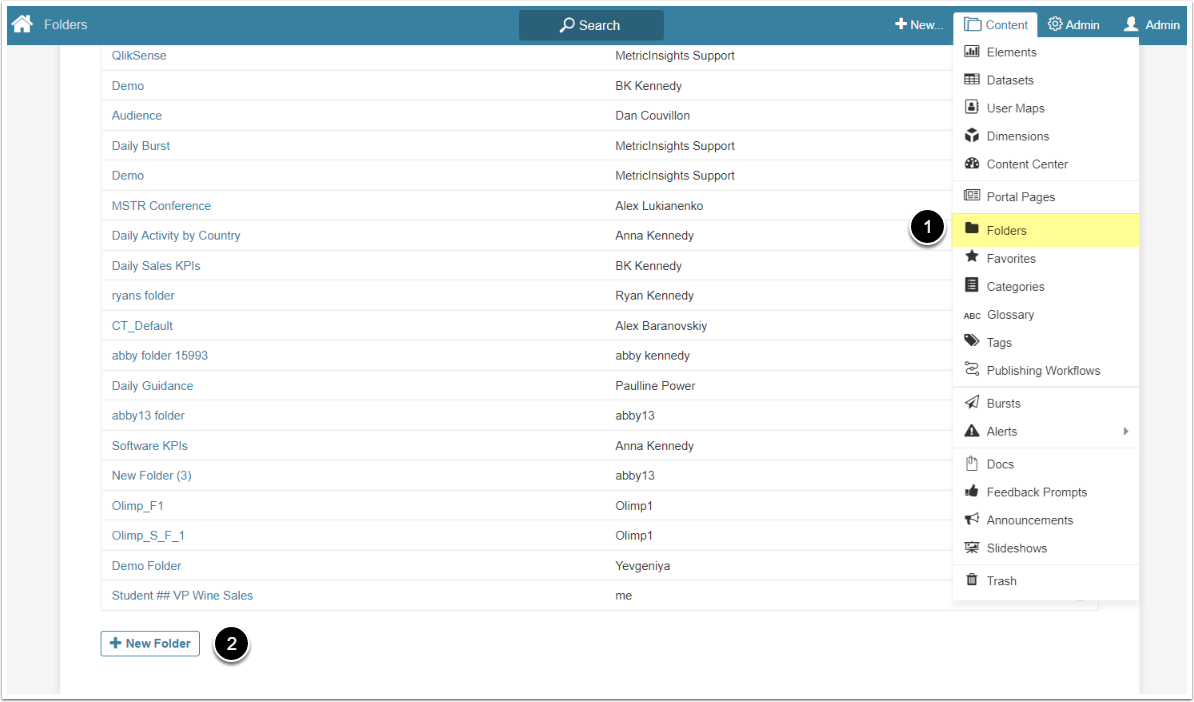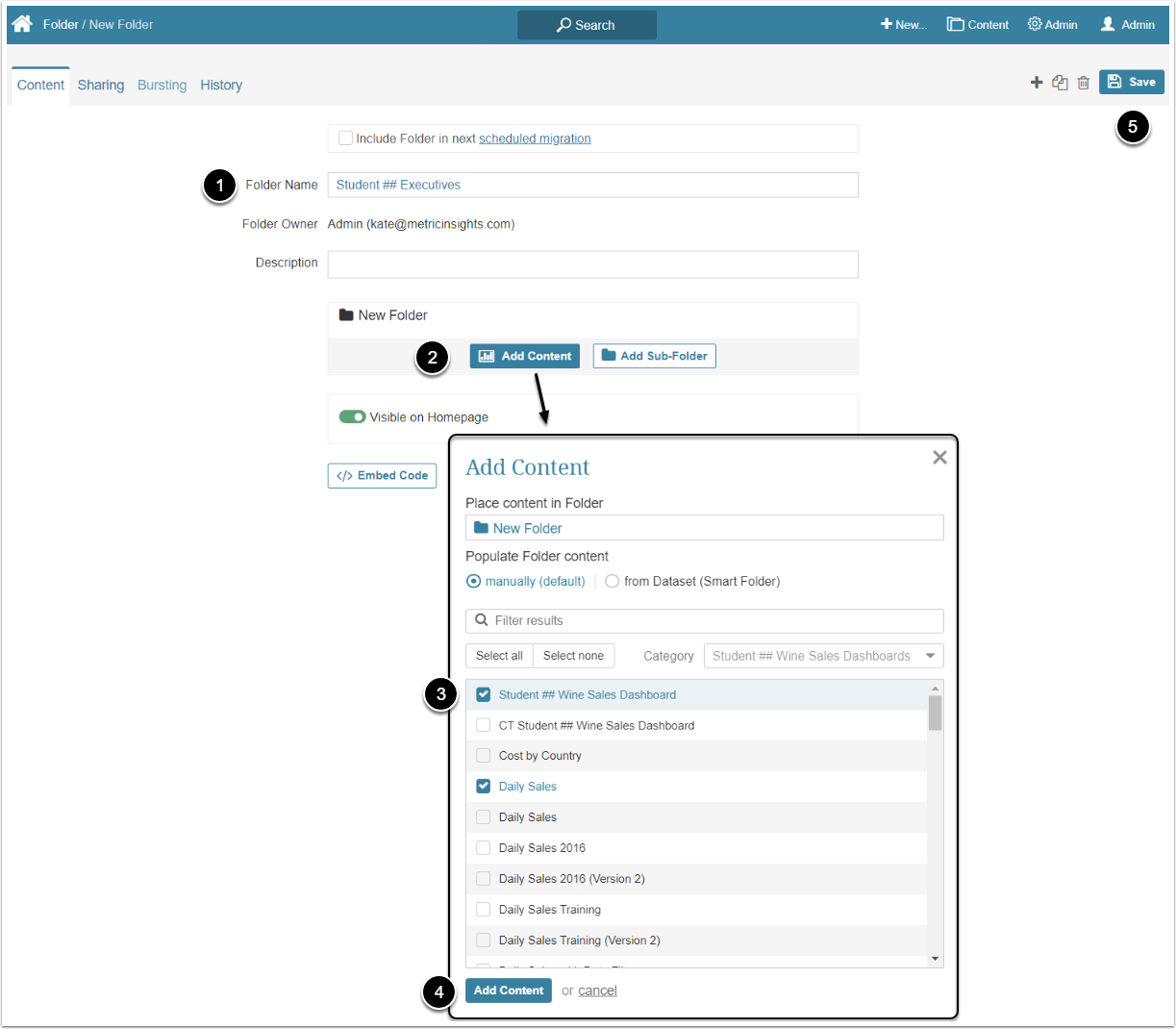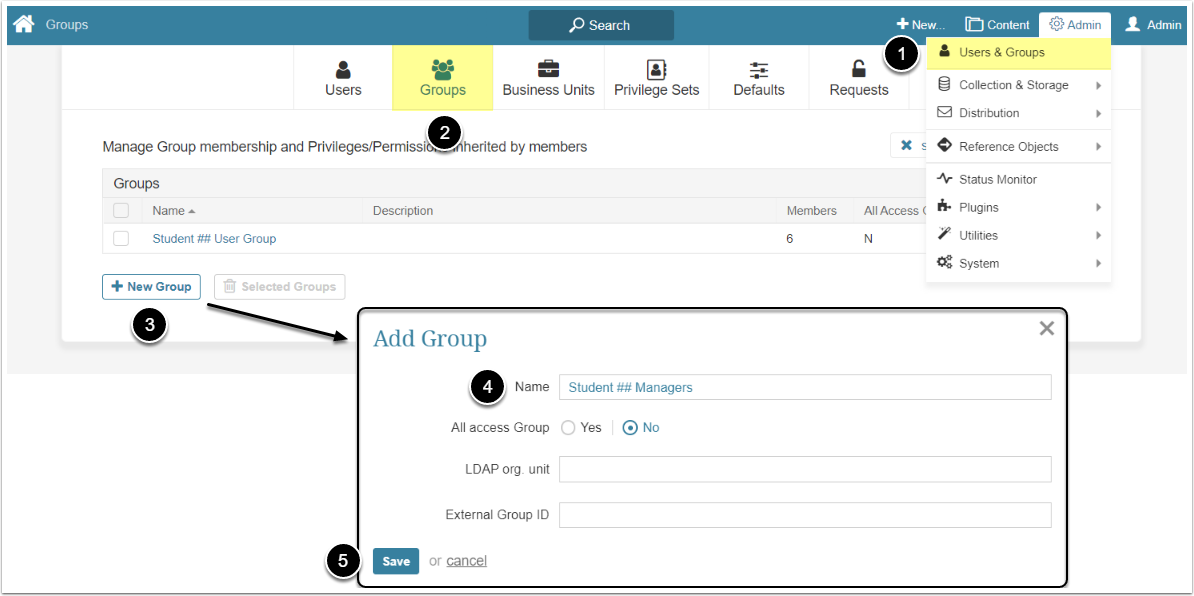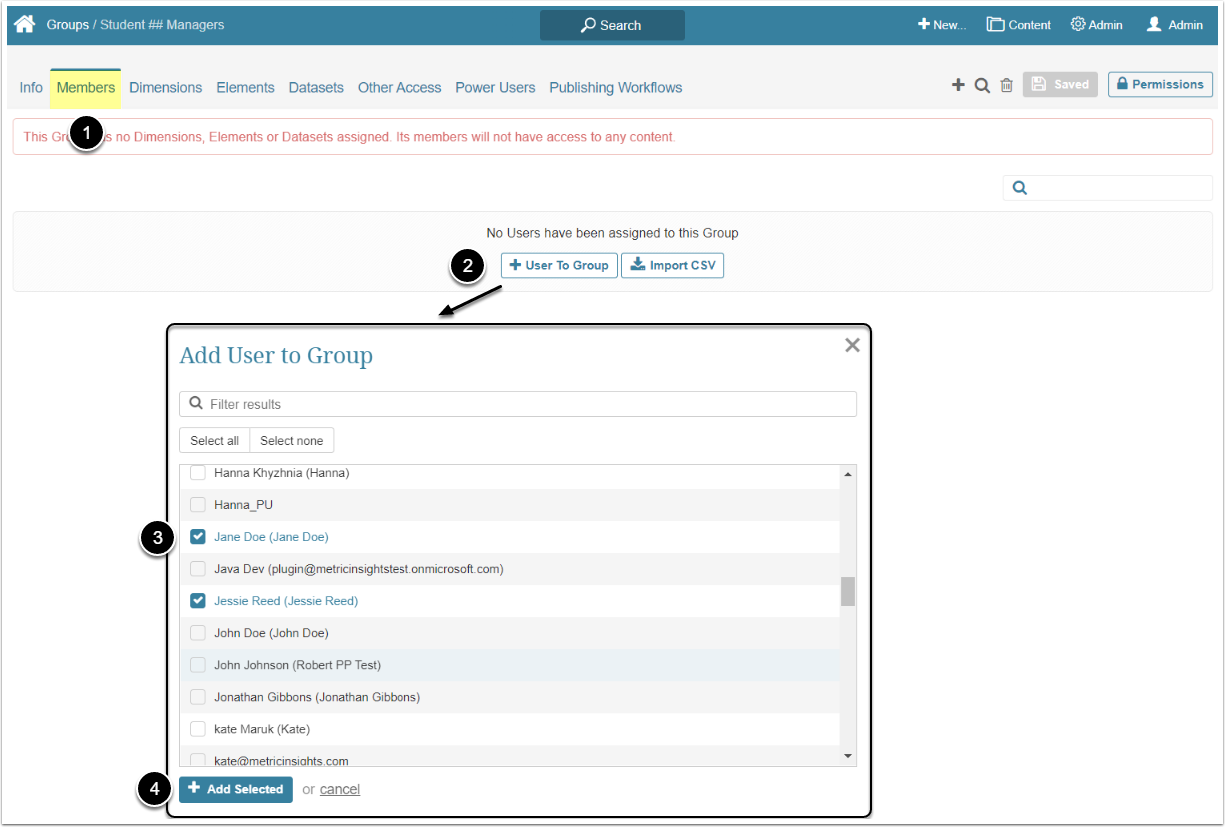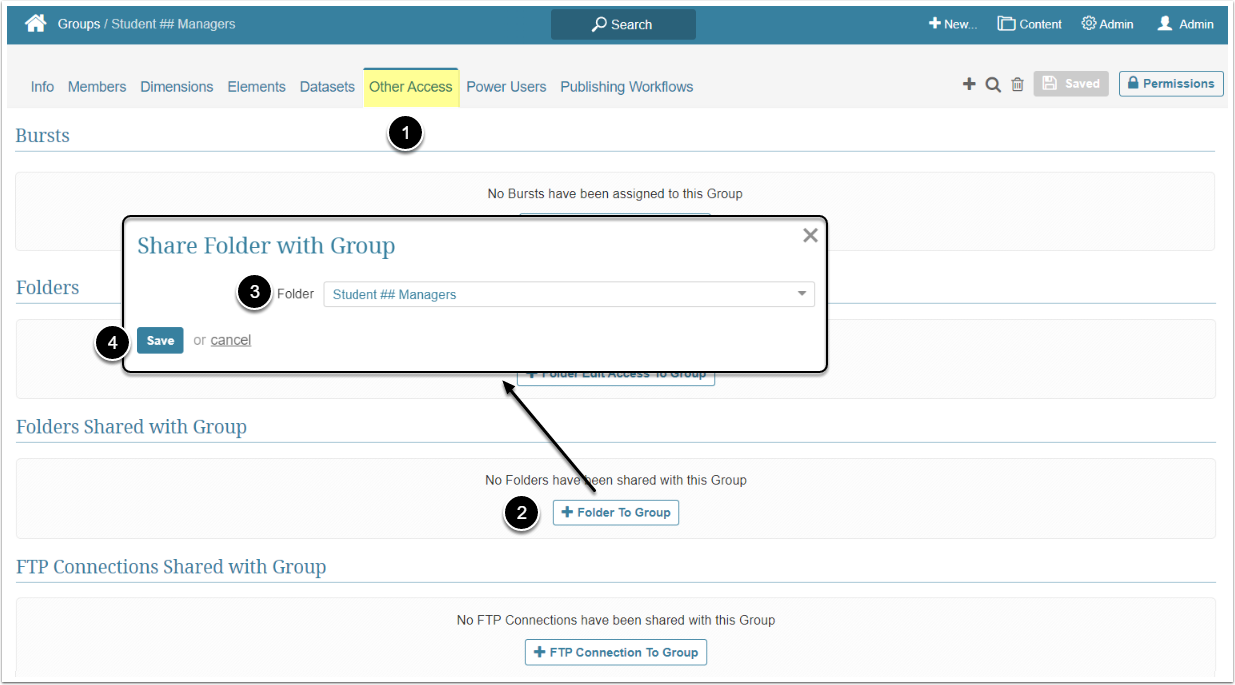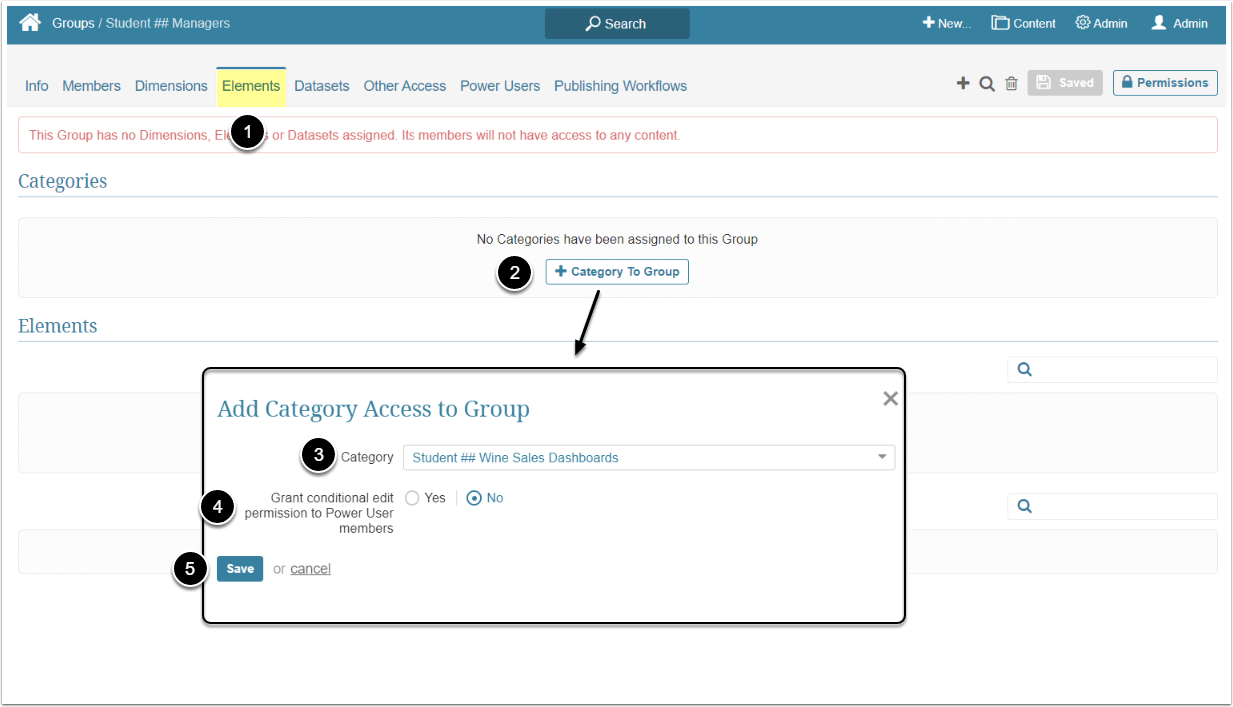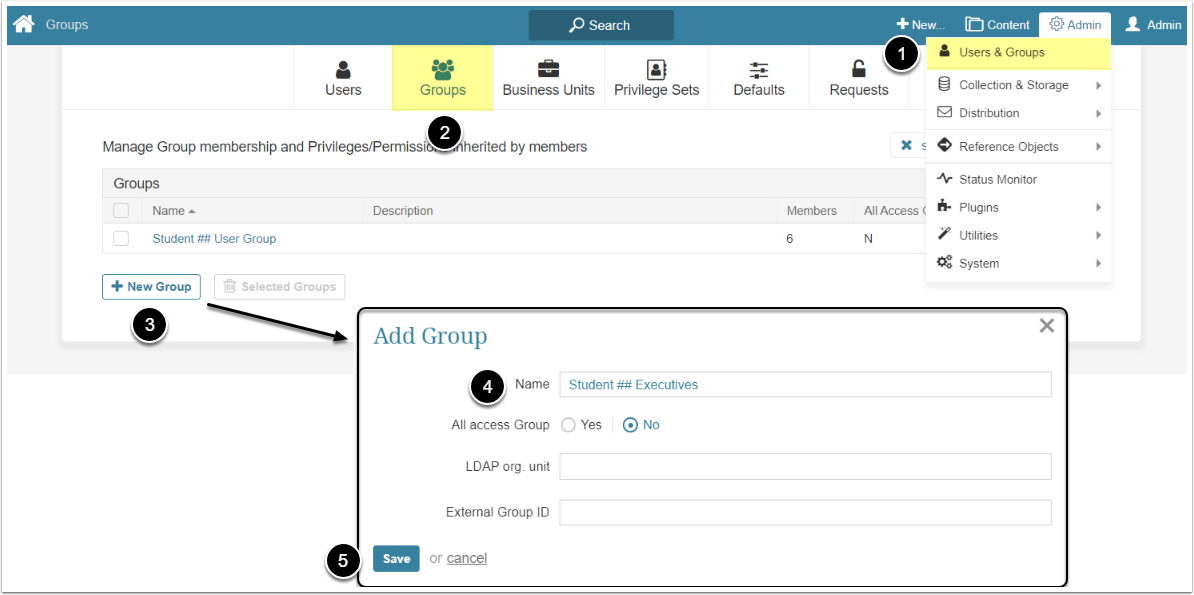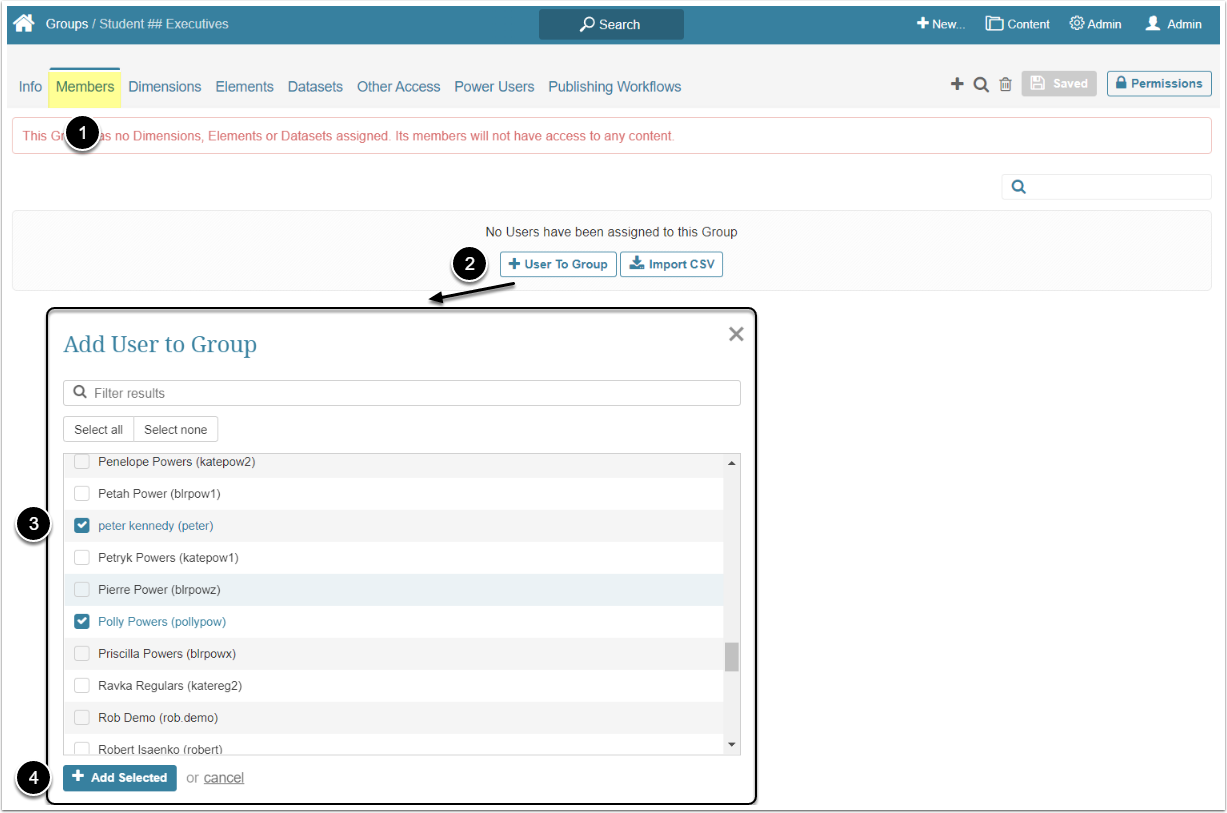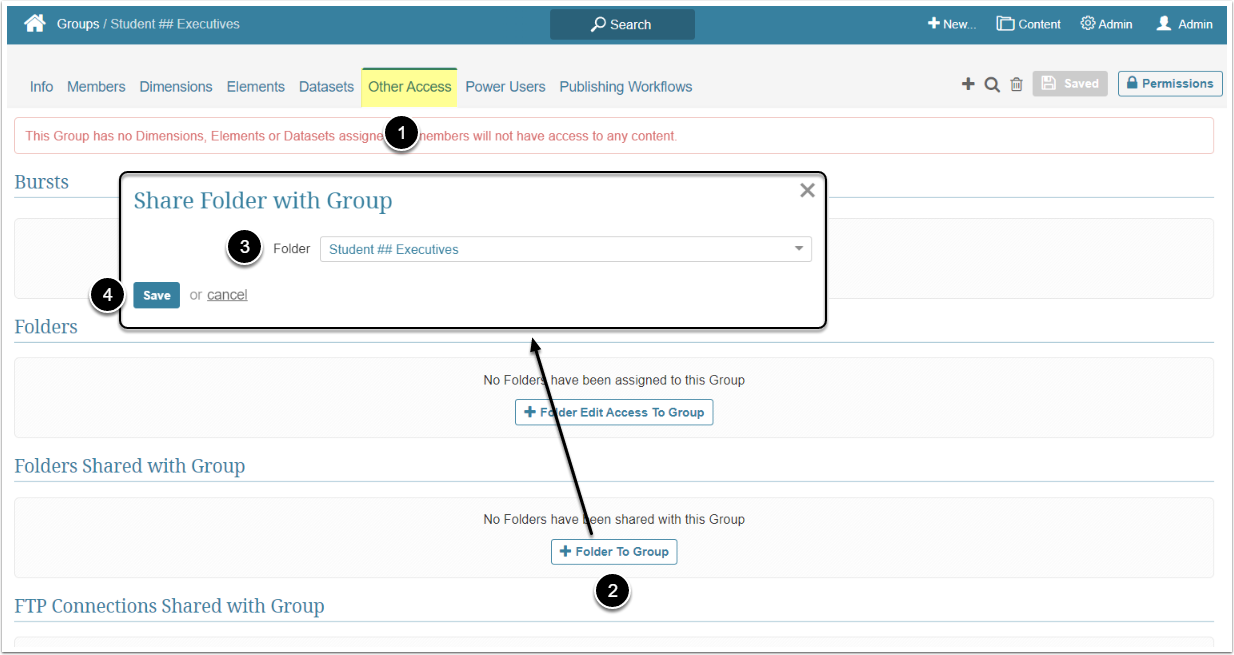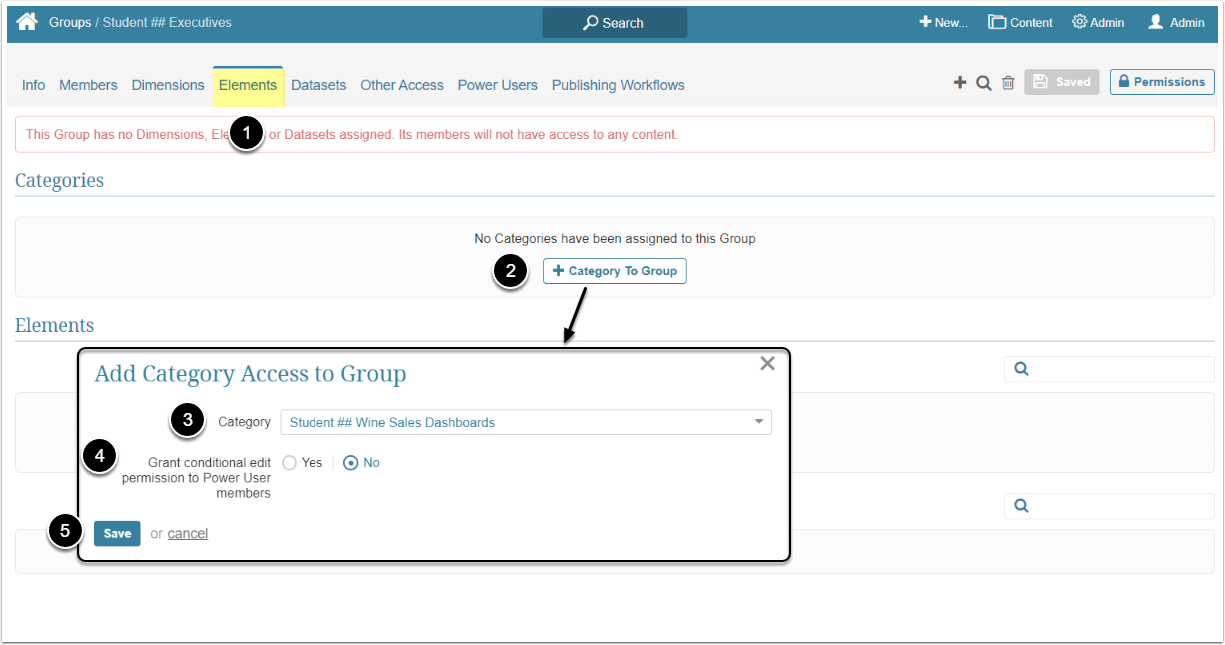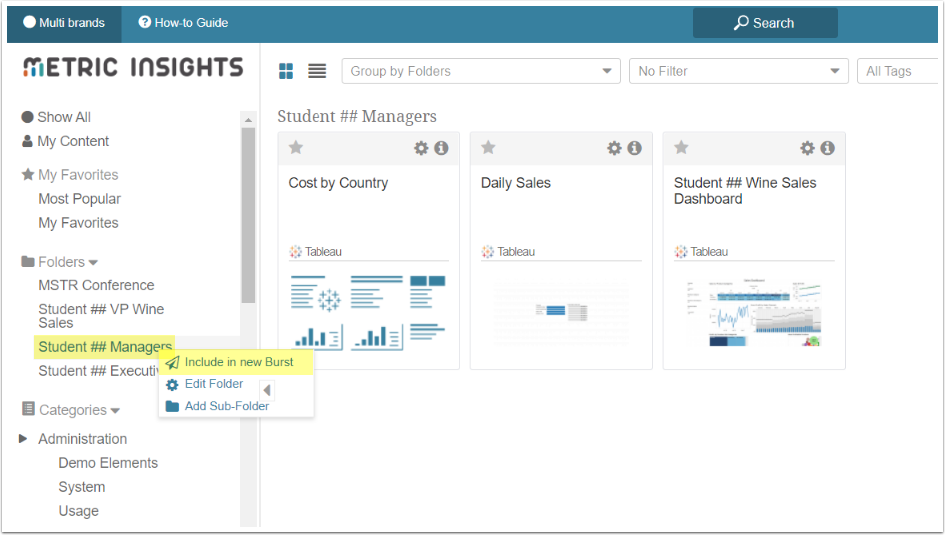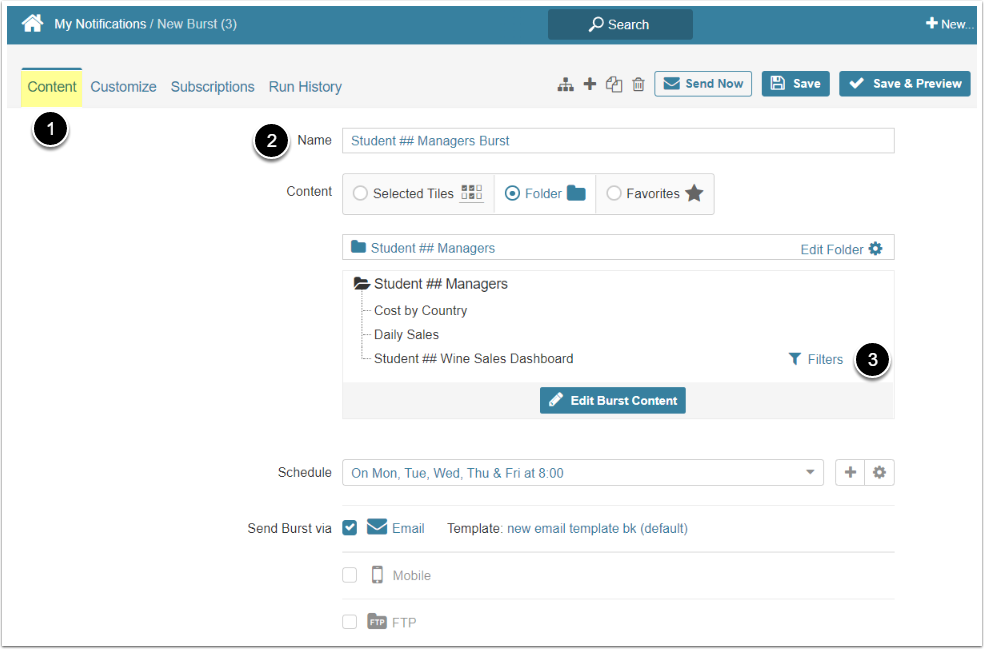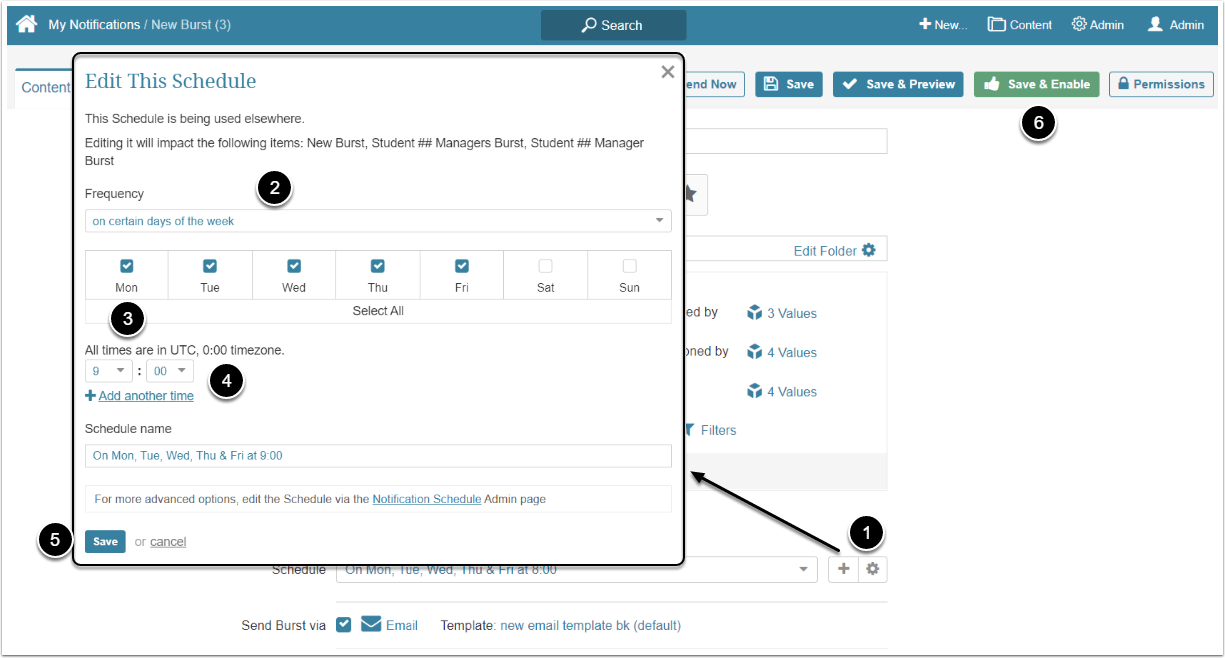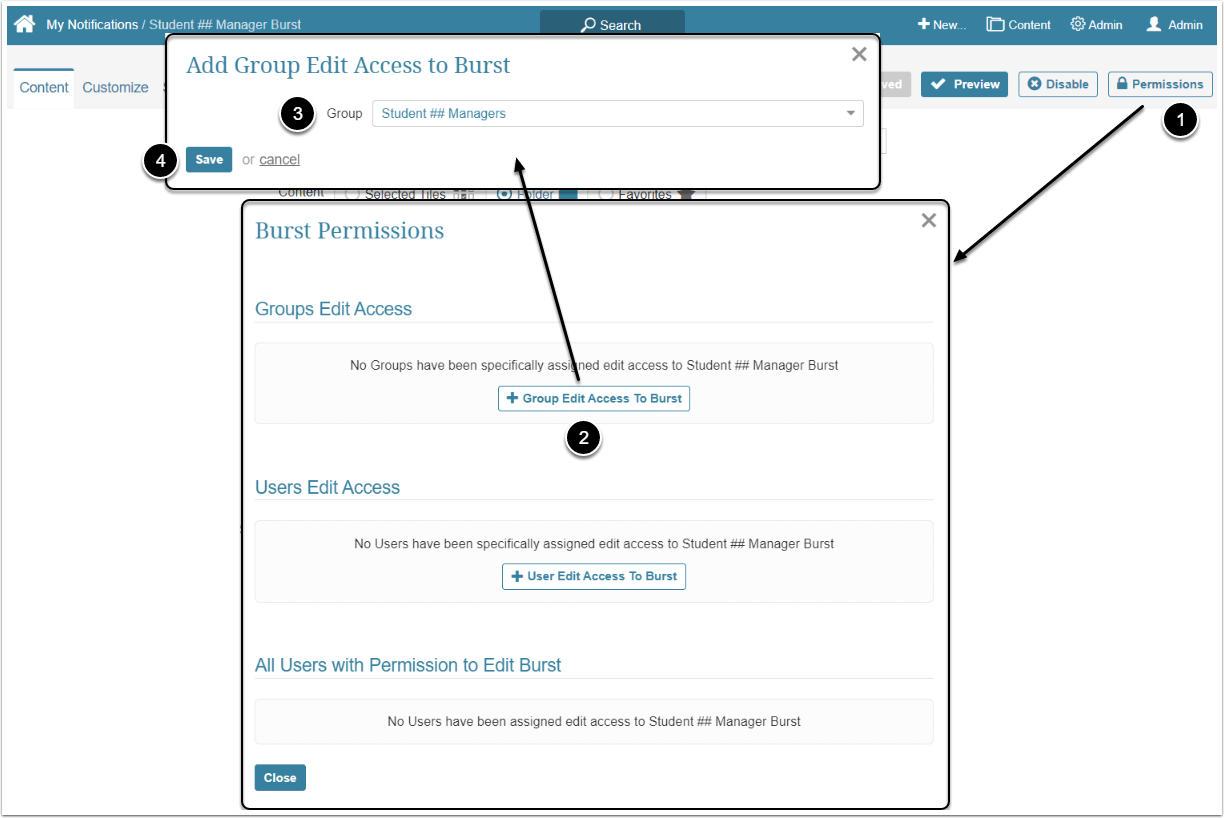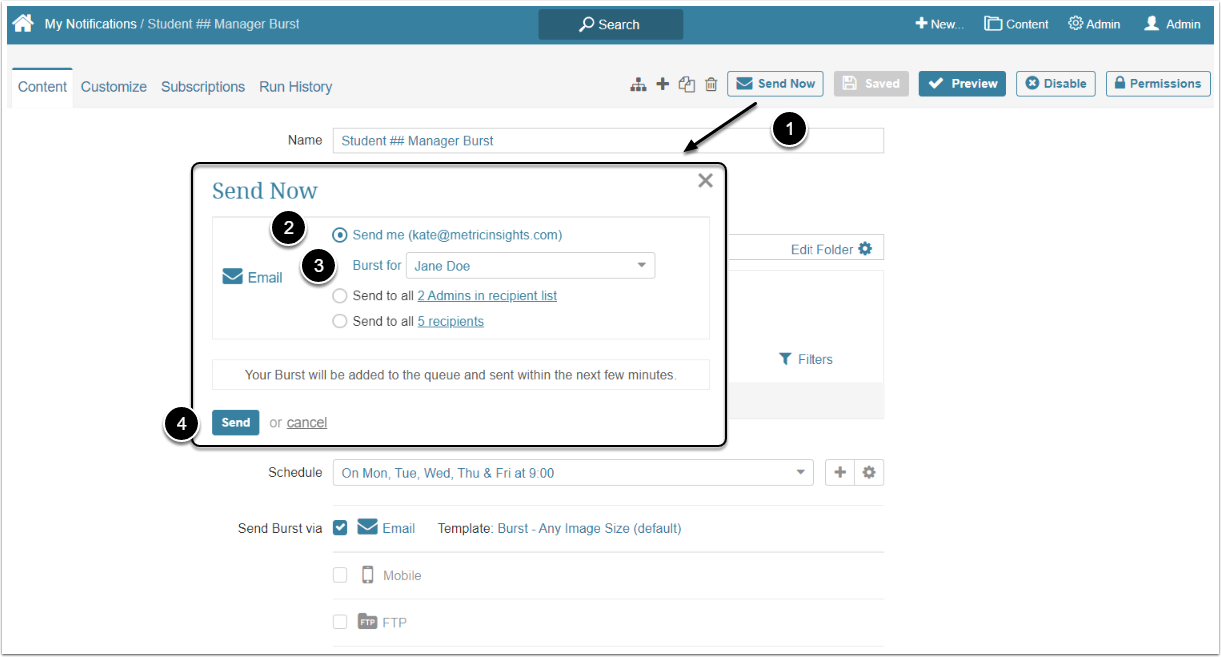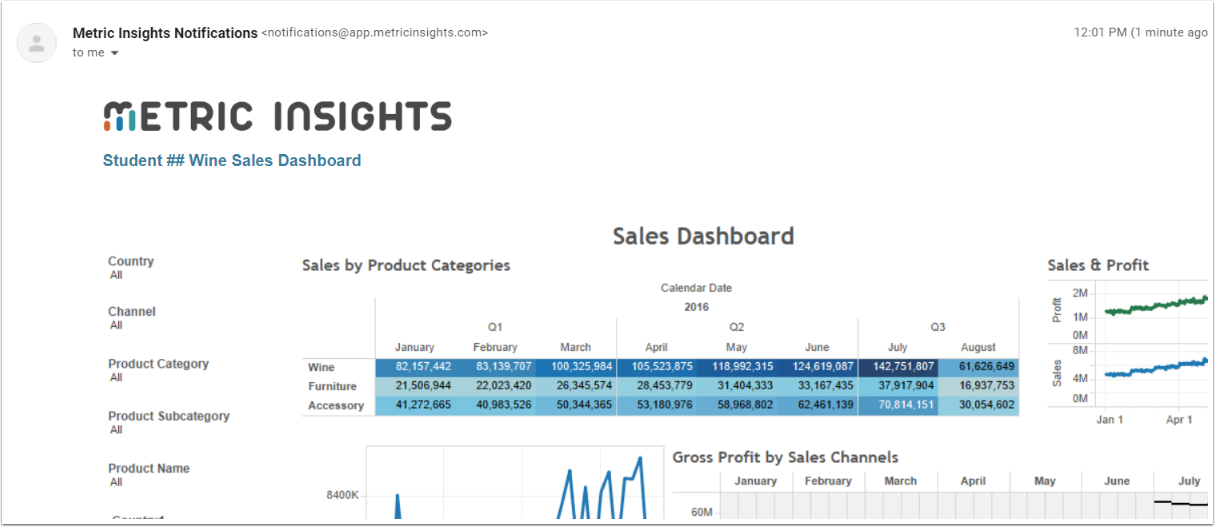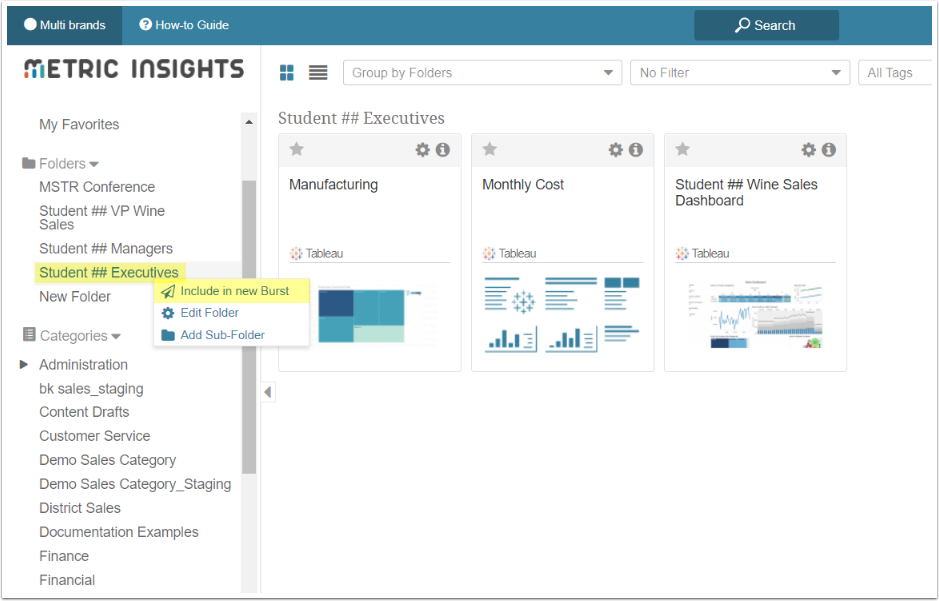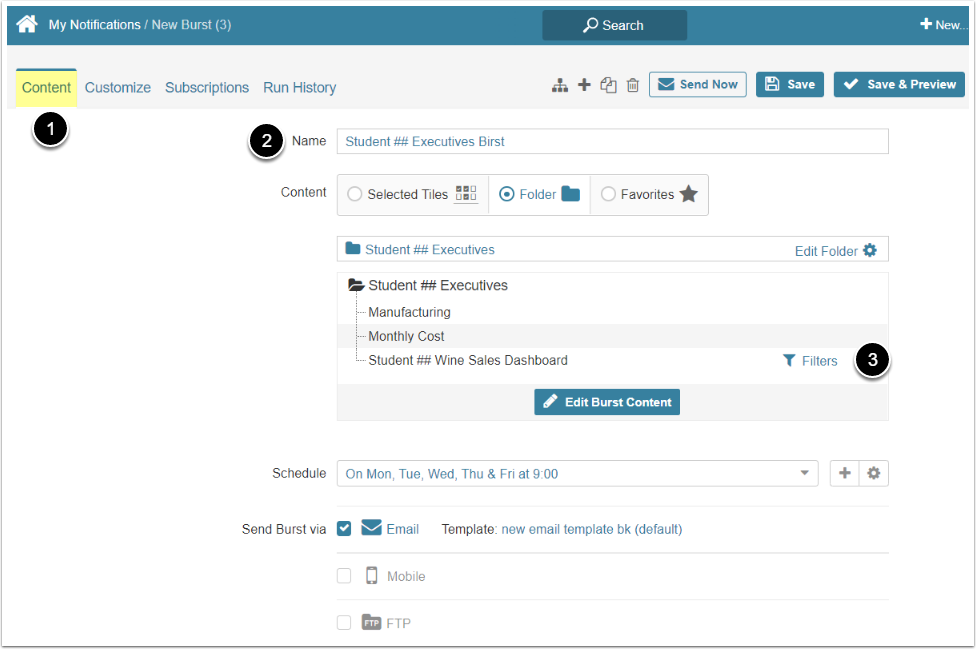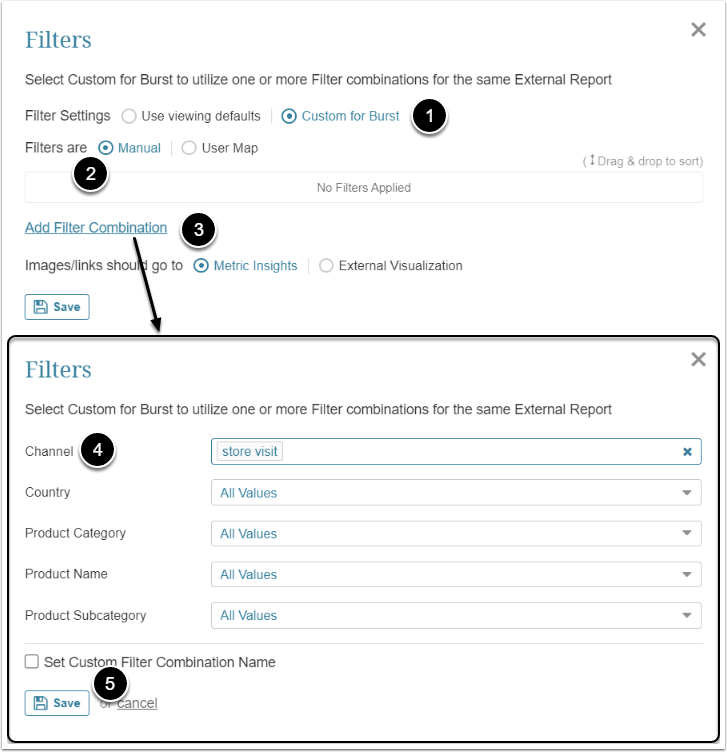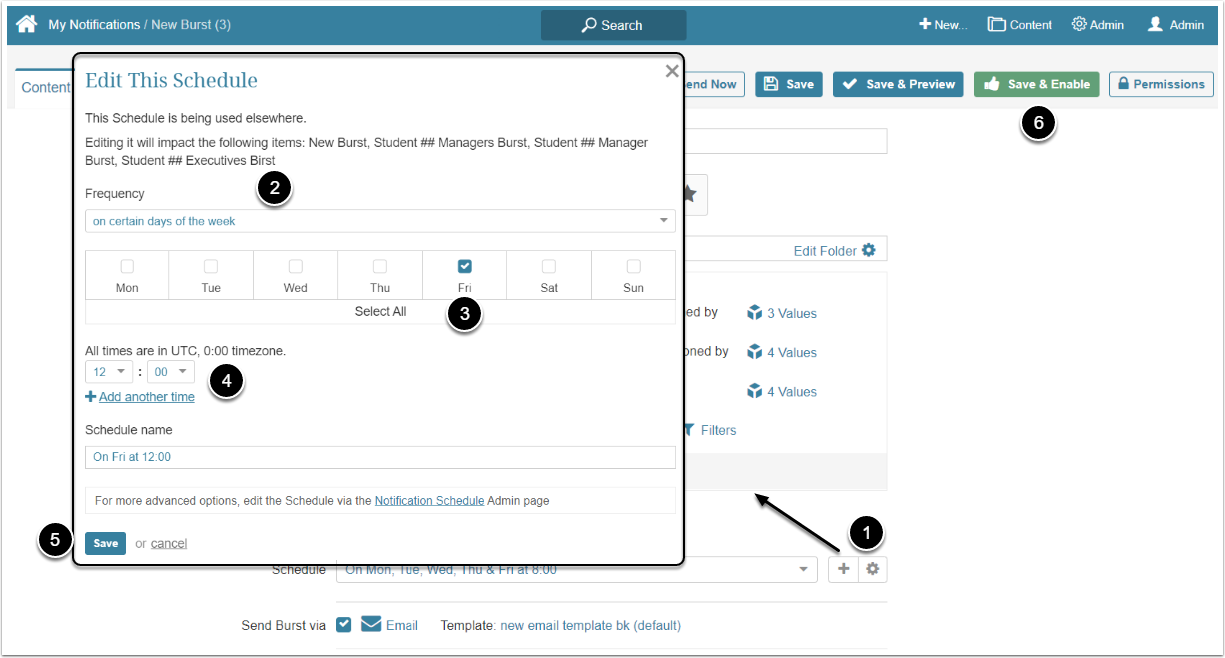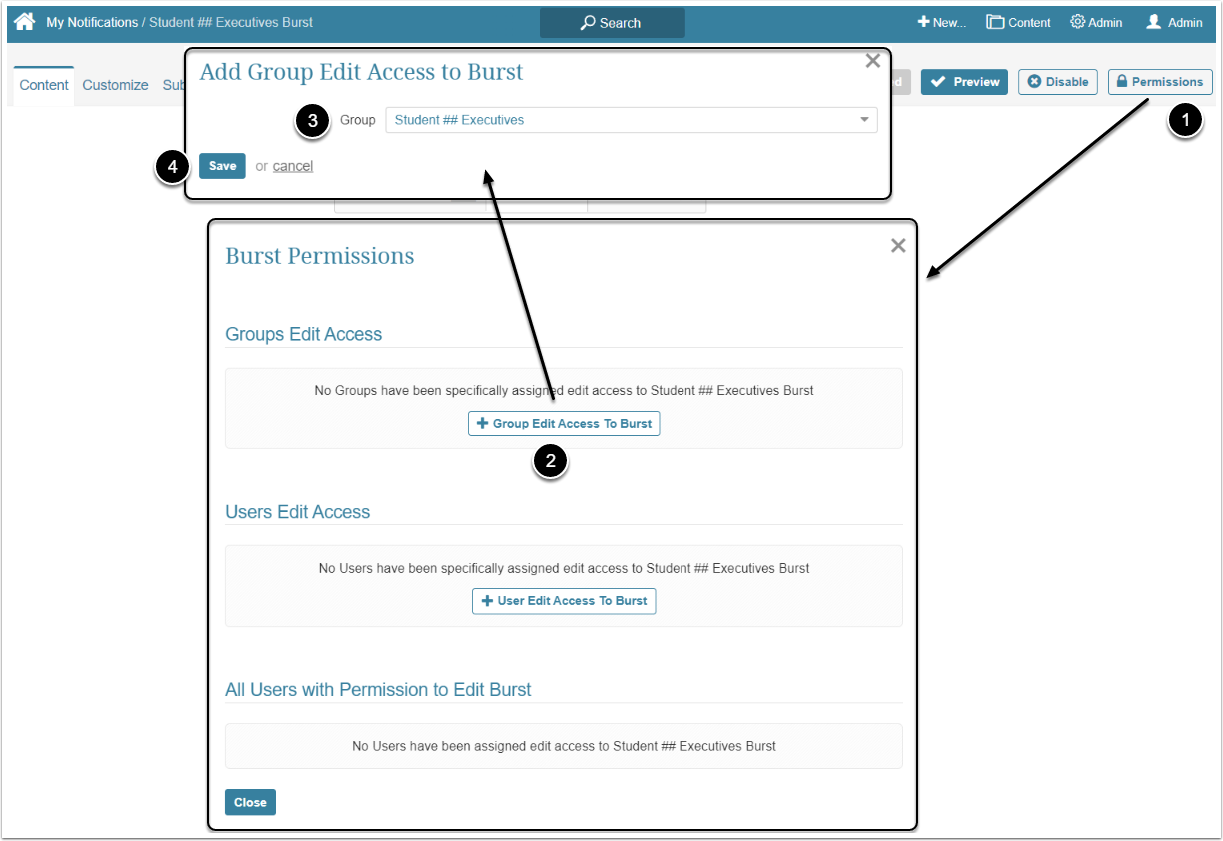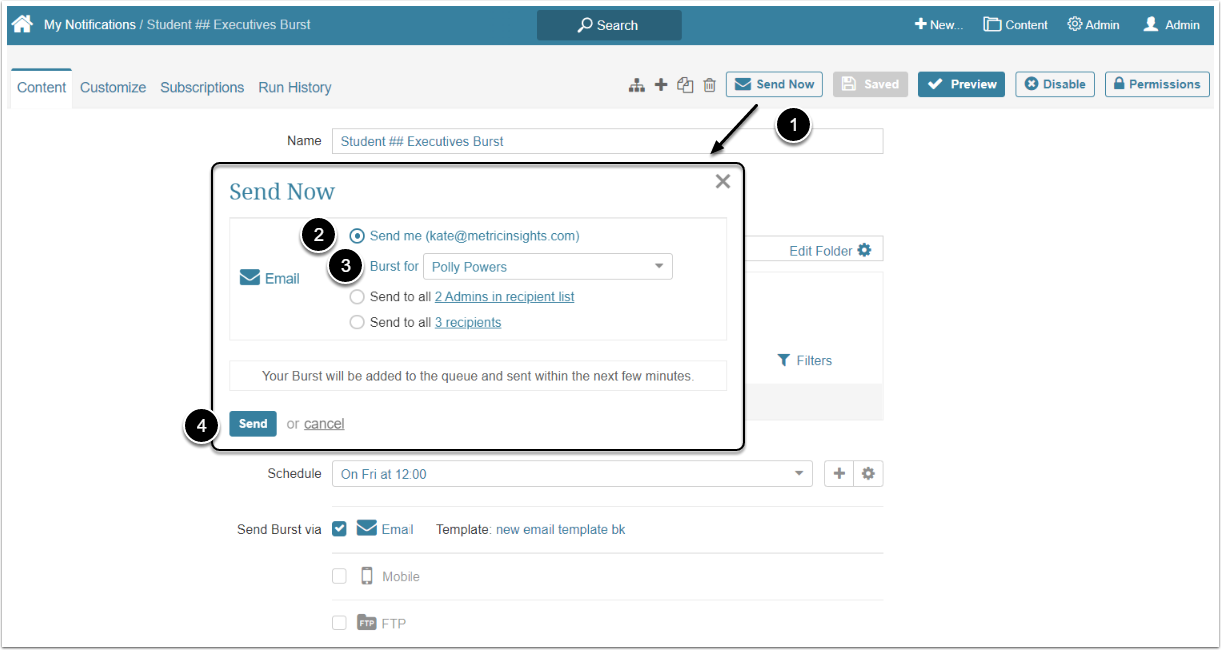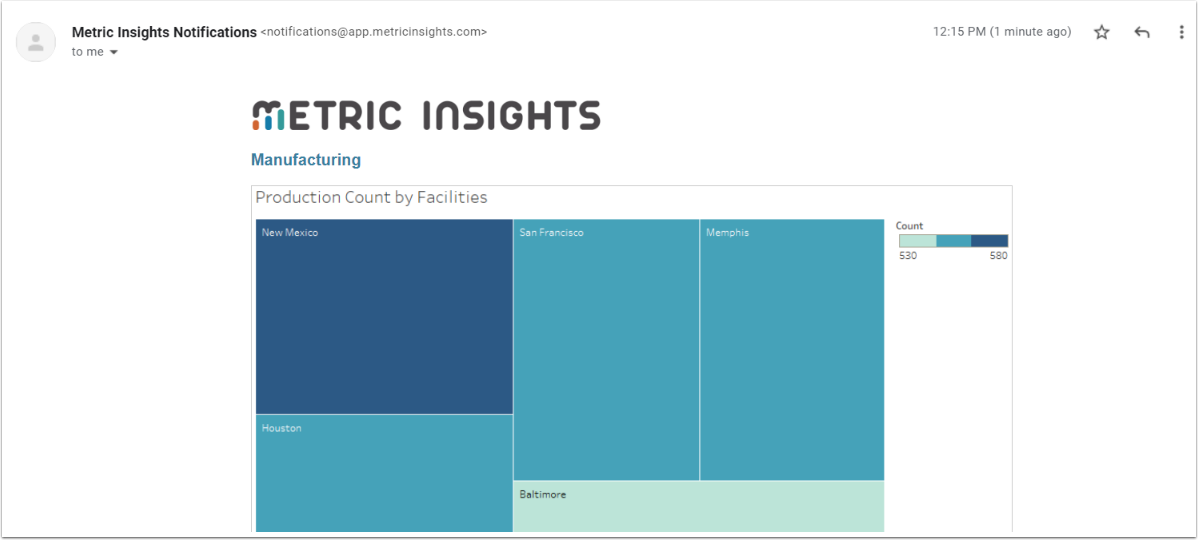This is second use case of the Training by Example series. Review it after finishing the Training by Example: Use Case — Catalog.
An Admin has a request from a business unit that oversees the company's Wine Sales. The Users require a regular email notification, containing updates on specific External Reports, distributed by different filter values. Use the example workflow outline below to:
- Learn how to enable the Auto Synchronization
- Understand how the content can be distributed
Before beginning this Use Case, make sure you have completed all the following steps:
- Added a Data Source
- Added a Data Collection Trigger
- Created a Category
- Created an External Report
- Created a User Map
- Applied User Map to the External Report
- Created a Folder
- Created a User Group
- Granted Users of the User Group access to the External Report
Content Auto Synchronization
Instead of creating an External Report for every file built by the BI tool, you can set the Auto Synchronization. Metric Insights will automatically fetch all the objects stored in the Data Source and create an External Report for each, according to the selected Template. For more details, refer to Content Auto Synchronization article.
In this section, you will create an External Report Template and learn how to set the Auto Synchronization of content.
Folder Architecture
By now, you've already created a Folder and placed an External Report in it. To facilitate content distribution, create two more Folders and populate them with appropriate tiles. In this example, there are two groups of Users: Managers and Executives. Managers receive Reports filtered according to the User Map, and Executives require totals for specific products. In this section, you will create Folders for those groups of Users.
Access to Content
In the Training by Example: Use Case — Catalog you've created a User Group. Now create two more, for Managers and Executives. They require different data, so you'll assign different Bursts to them in one of the next steps.
You grant Users access to Elements by granting them Permissions or Privileges. Permissions are given to a Group and are inherited by Users who are Members of the Group. The User included to the Group will be able to see the Folder if you grant the Group a Permission to see it.
- Access Admin > Users & Groups
- Open Groups tab
- [+ New Group]
- Name: Name the Group "<your name> Managers". In this use case "Student ##" is used instead of a name
- [Save]
- Access Admin > Users & Groups
- Open Groups tab
- [+ New Group]
- Name: Name the Group "<your name> Executives". In this use case "Student ##" is used instead of a name
- [Save]
Distribution of content
In this section, you will create a Burst, a Notification Schedule for Bursts and grant the members of the Group an access to Burst editing.
A Burst is a collection of content sent to users on a schedule. By applying a User Map or filters you can send User-specific emails. This means that each User (or Group) will receive targeted content based on their responsibilities. In this Use Case, Managers should receive Reports filtered according to the User Map and Executives require totals on specific products. Bursts are distributed to Group Members if the Group is subscribed to the Burst, so you'll grant each of the Groups a Permission to see and edit a Burst.
For more details on Bursts refer to this article.
- Click the plus icon near the Schedule field
- Frequency: Select "on certain days of the week"
- Activate the check box above all working days
- Choose "9:00" on the timer
- [Save]
- [Save & Enable]
You will see the confirmation "Burst is Enabled" notification. [Close] to proceed.
Now, all the managers, added to the User Group you created will receive an update of External Reports placed to the Folder you created every every working day at 9:00 AM.
- Click the plus icon near the Schedule field
- Frequency: Select "on certain days of the week"
- Activate the check box above one of the days
- Choose "12:00" on the timer
- [Save]
- [Save & Enable]
You will see the confirmation "Burst is Enabled" notification. [Close] to proceed.
Now all the executives included in the Group will receive content, filtered according to the set filter value once a week at 12:00 PM.
Congratulations! You finished the workflow!
